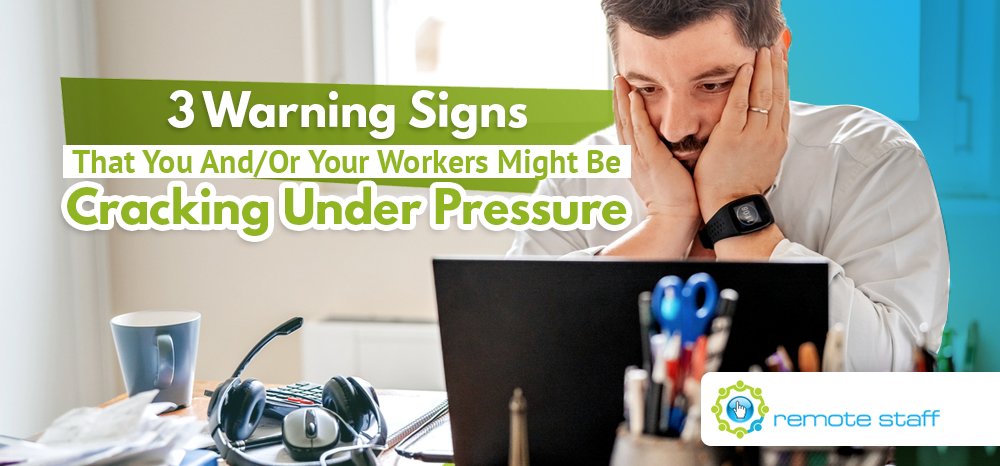I love what I do. I grew up being told that there’s no money in writing, and while I’m no JK Rowling or Dan Brown, the compensation I get for doing something that comes naturally to me isn’t bad either. Plus, I get to do it from anywhere. (Though these days, that’s largely a toss-up between my office and home, but ah, well.)
Still, that doesn’t mean I don’t get bad days. The past two, for instance, were simply horrible. I found myself sitting in front of my computer and just kept drawing blanks. Fortunately, my team’s very understanding, and a colleague I respect (but shhh, don’t tell him) told me that it’s perfectly normal.
Speaking of normal, the hashtag #NewNormal has been done to death, no? Seven months into a global pandemic with no signs of letting up does that, I suppose. Working from home, and for some Australian entrepreneurs, outsourcing remote Filipino workers has been a huge part of this #NewNormal.
But while most of us have taken surprisingly well to this new set-up, there’s no denying that there’s nothing normal about the world’s current state of affairs at all. Let’s face it. COVID-19 sucks, and it’s taken away a lot of things.
So, if you or your remote workers have been feeling the pressure a little too keenly these days, it’s, as my coworker said, normal. How can you tell if you or someone on your team needs to take a breather? Here are three flags to look out for:
1. Increasingly Negative Language.

Emotional, negative, and defeatist language is a sure sign of stress. It’s one thing to say “This project is going to be challenging,” and quite another to say “This is impossible.” or “We’ll never get this done.”
The use of absolutes like “never” and “impossible” indicate a cognitive distortion. Life is rarely ever black and white, but stress can make it appear so. In this case, it’s possible that the said project is indeed difficult. However, it would be a stretch to say that it can’t be done, yes?
Engaging in black and white thinking makes us miss hidden opportunities. This, in turn, leads to feelings of despair and hopelessness, thus leading to a vicious cycle.
2. Decreased Resilience.

Okay, so this symptom is a bit harder to detect. We define resilience essentially as the ability to bounce back from trouble or disaster. (Also, it’s a key Filipino trait, what with all the crap we have to put up with, but I digress.)
On the other hand, there is a quick way to gauge your team’s current levels of resilience. At the next video or group call, ask them if they’ve been experiencing the following more frequently:
- Difficulty concentrating;
- Constant irritability;
- Loss of interest in things they used to enjoy;
- A feeling of being cut-off from others;
- Hopelessness about the future.
If they tick off a lot of the items on that list, you can bet that team morale is running low.
3. Higher Frequency of Errors.

Contrary to popular belief (though I don’t know who started this), high-stress situations do NOT result in greater productivity. No, they tend to breed more mistakes and more missed deadlines. When you’re stressed and on edge, you won’t have as much presence of mind to take note of important things.
Also, there are other, seemingly minor issues that could also be early warning signs of pressure getting to your team. This include zoning out during meetings, frequently forgetting to follow up, and even omitting a signature line in a key email.
A word of caution, however. A difficult employee is different from an employee going through a difficult time. While we should all make allowances for these unprecedented times, no one should have to tolerate toxic behavior, especially if it’s affecting everyone else on the team.
One of the things that makes remote working challenging is that it’s harder to reach out to a colleague or employee who’s struggling. Unlike in a traditional office setting, you can’t exactly just take them aside and comfort them. Sincere empathy doesn’t exactly translate as well in an email or instant message as it does face to face.
But we carry on. It is the best thing we can do, at least until things get better.
Serena has been working remotely and writing content for the better part of the last decade. To date, she's written for Pepper.ph and Mabuhay Magazine, among others, and has churned out more than a thousand articles on everything from The Basics of Stock Market Investing to How to Make Milk Tea-Flavored Taho at home.





















